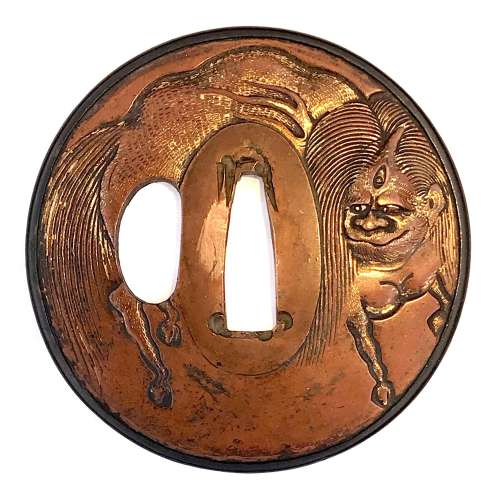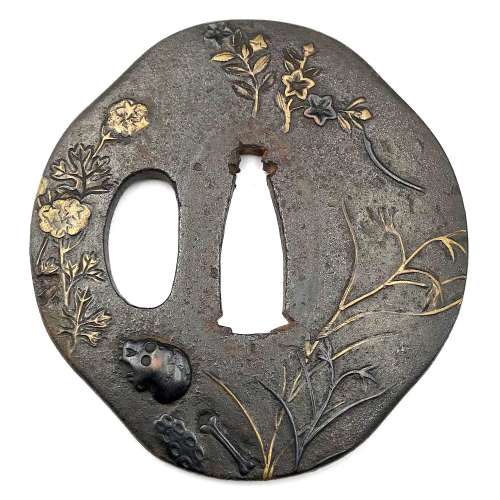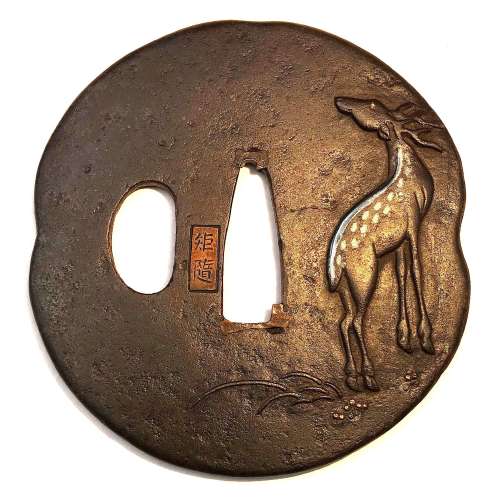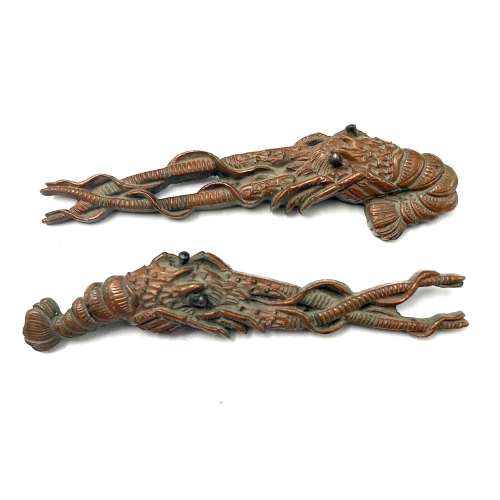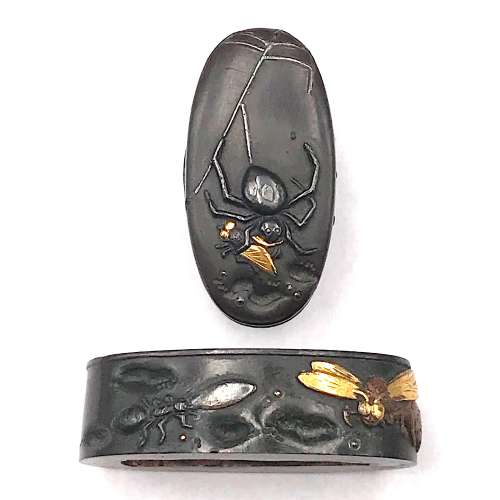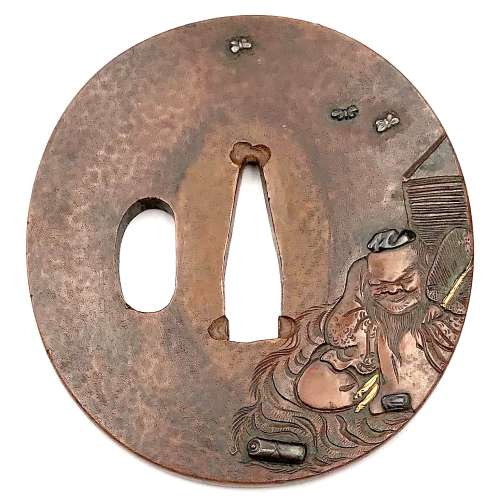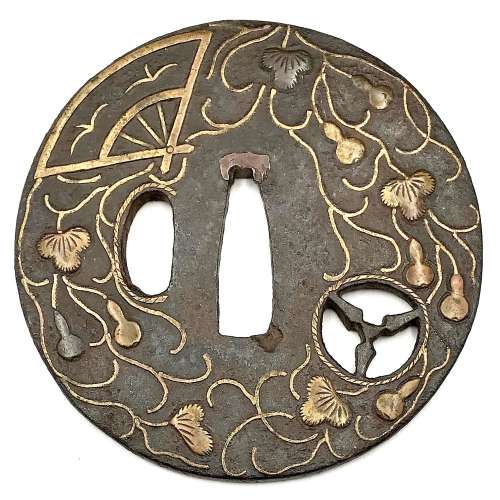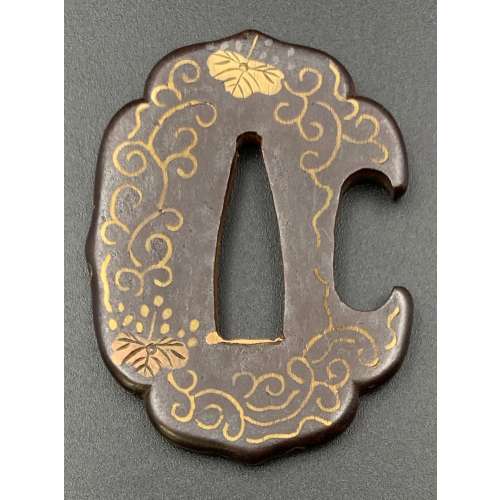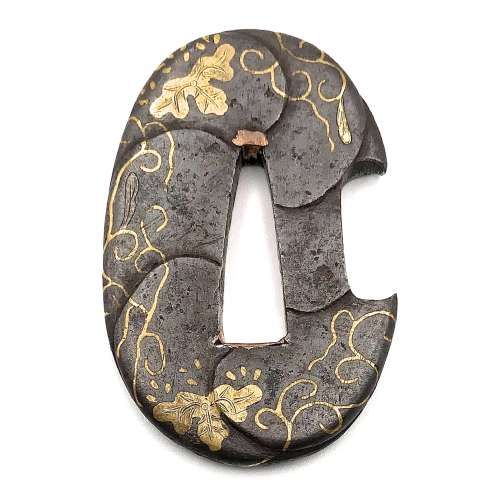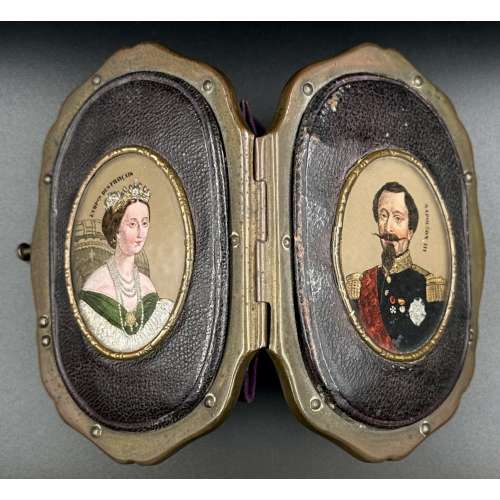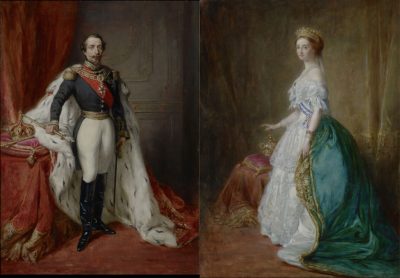Copper tsuba of slightly elongated round form carved in low relief (usuniku-bori, katakiri bori) with the design of a mythical creature: a horse, however, with divided hoofs, with anthropomorphic (human-like) face though with a vertically positioned third eye on the forehead, and a corn. Certain elements of the image accentuated with gold iroe. On the back: flowers and grasses carved in katakiribori technique. Shakudō fukurin.
Edo period.
Dimensions: 70.7 x 70.2 x 3.7 mm In a custom wooden box.

